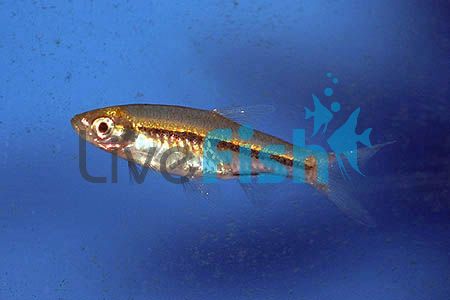Red Tail Rasbora 2cm
A cheap but underrated fish in the aquarium hobby is the Red Tail Rasbora. Their simple colouration often leaves them out of the spotlight compared to more vibrant schooling species however this species is an easy to care for, active and larger growing Rasboras as well. The are naturally found in the Mekong river and will make for a great species to add life to a planted tank or for a biotope aquarium because of their natural colours.
- Buy 5 for $2.88 each and save 10%
- Buy 10 for $2.56 each and save 20%
Red Tail Rasbora
A cheap but underrated fish in the aquarium hobby is the Red Tail Rasbora. Their simple colouration often leaves them out of the spotlight compared to more vibrant schooling species however this species is an easy to care for, active and larger growing Rasboras as well. The are naturally found in the Mekong river and will make for a great species to add life into a planted tank or for a biotope aquarium because of their natural colours.
Red Tail rasboras are quite distinctive from other rasboras species due to general shape being more elongated and the colouration. The main body colour ranges from a brown to olive green colour with iridescent gold scales. They also have a white underbelly and faint black lines through the fins but the main highlight of the Rasbora is the vibrant orange line that runs from head to tail. This simple array of colours is what can make them a great candidate for detailed aquascapes where the fish is more so an accent to the environment instead of being the spotlight. The bright orange line will provide just enough contrast against the dense plants to where the schooling behaviour of this fish can be appreciated but not serve as a distraction.
Red Tail rasboras can be bred in the home aquarium but it is not a common practice. It is best to get a group of these fish and place them in a dedicated breeding tank that usually has a lot of moss or removable spawning mops. These fish are egg scatterers, which means they will lay their eggs in the moss or spawning mops which can then be removed and grown hatched in a separate system. The fry should be fed rotifers or liquid meals until they can survive on their own because they are extremely small. This challenge of rearing up the fry makes this fish a fun breeding project to consider.
Tank Recommendation for your Red Tail Rasboras
Require a tank of least 70 litres, due to their active behaviour and maximum growth size of 6.5 cm. These fish come from shallow, vegetation dense waterways in the wild with high flow as well so it would be best to try emulating this in the aquarium. Though the substrate choice is not a major concern the tank should incorporate lots of hardscape elements and plant cover to make these fish feel at home.
Suitable Tank Buddies.
These rasboras are a friendly species that can easily get along with a wide range of community aquarium fish. They have small mouths, are not fin nippers and should rarely outcompete their tank mates.
Usually Compatible
Angelfish, rummy nose tetras, giant danios, clown Rasboras, rams, geophagus and range of other common community fish.
Sometimes Compatible
Delicate nano fish like celestial pearl danios, peacock gudgeons, emerald Rasboras and similar species that may get stressed out by the active presence of the red tail rasboras.
Rarely Compatible
Predatory South American cichlids, African cichlids, and shrimp not compatible with Red Lined Rasboras.
Feeding your Red Tail Rasbora
Like most common tropical aquarium fish, Red Tail rasboras are reasonably simple to feed. In the wild they will be found eating worms, crustaceans, and small insects. They will also accept dried food in the form of a high-protein pellet or flake meal of good quality.
| Scientific Name | Rasbora Borapetensis |
|---|---|
| Care Level | Easy |
| Common Names | Red Tail Rasbora |
| Diet | Carnivore |
| Fish Family | Cyprinidae |
| Lifespan (years) | 6 |
| Max. Length (cm) | 6.5 |
| Min. Tank Volume (l) | 70 |
| Origin | South East Asia |
| Reef Safe | Yes |
| Sociability | Peaceful |
| Venomous | No |
| Water Conditions | 24-26° C, pH 6.5 - 7.0 |




